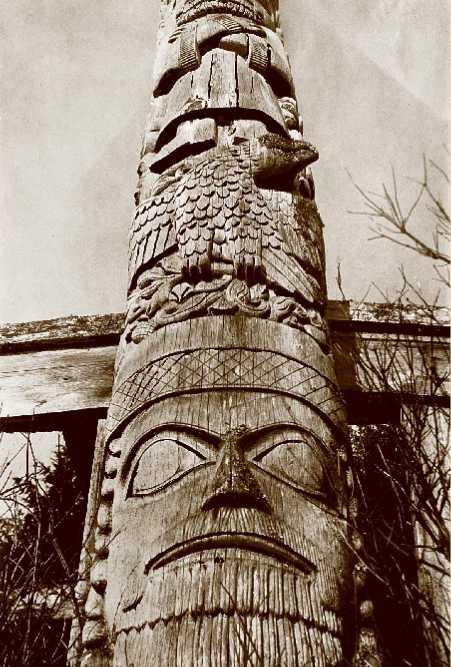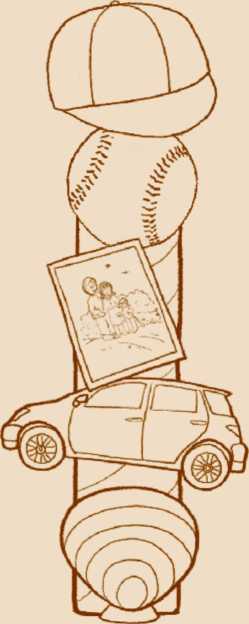WHEN EARLY missionaries arrived in the Pacific Northwest, they believed that the carved and painted poles reaching for the sky symbolized gods that the native people of the region worshipped. The missionaries were wrong. Instead, totem poles

Totem pole.
Told the village who lived in the home behind the totem pole, usually a powerful or well-off family or clan. Totem poles more or less served as address markers.
Carved from single cedar trees up to 40 feet high, each totem pole was unique with carved animal figures that showed a clan history and privileges. It was a time-consuming task to cut, paint, and prepare a log. Like many other Native American artifacts, many totem poles were removed from their rightful places by museums and souvenir seekers. Since the passage of the Native American Graves Protection and Repatriation Act in 1990, some of them have been returned to their homes.
Materials
? Paper
? Drawing tools
? Clipart
? Glue stick
? Empty paper towel roll
Think about your family history. Remember some of the stories you’ve been told by family members. Ask older family members for information as well. Choose five or six things about your family that you want to represent. Pick symbols to represent those things. For example, if your family lives or originated from near the ocean, you may want to include a dolphin or whale.
Draw the symbols or find clip art to represent them. Cut, color, or paint these images. Glue the images on an empty paper towel roll, stacking one symbol on top of another.

With your hands. You can cover them in flour to keep the dough from sticking too much.
Fill a skillet with oil about lYi inches deep. Sprinkle some salt in the oil to keep the oil from burningorsplatteringtoo much. Whiletheoil is heating over medium-high heat, pull off pieces of dough and make balls, each about the size of a golf ball. Flatten the balls slightly, and add them to the hot oil. Turn them over when they are brown on the bottom. Drain them on paper towels, and keep them warm until you’re ready to eat.




 World History
World History









